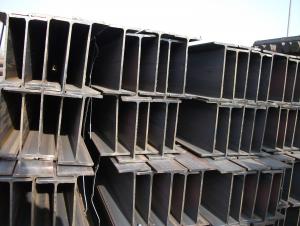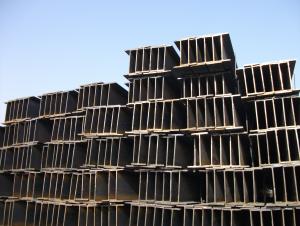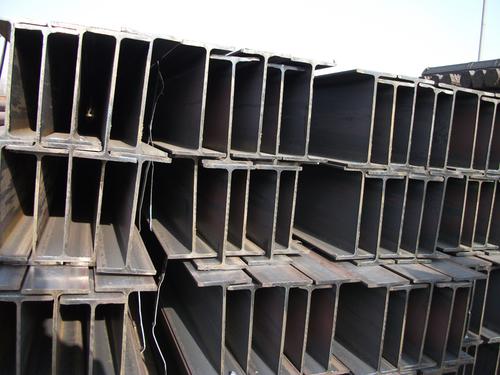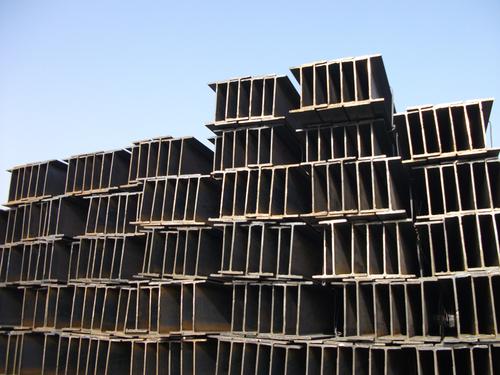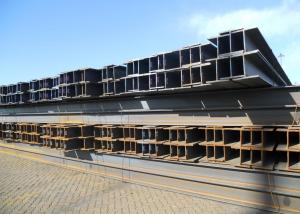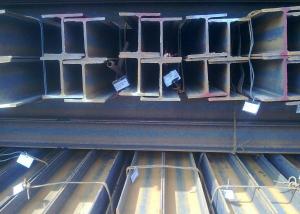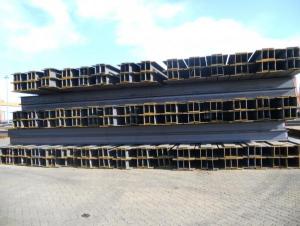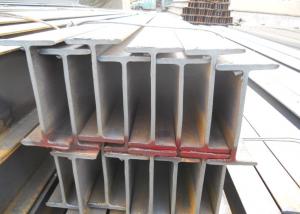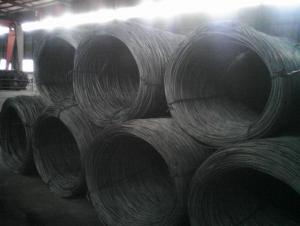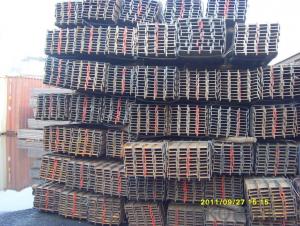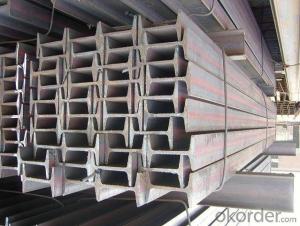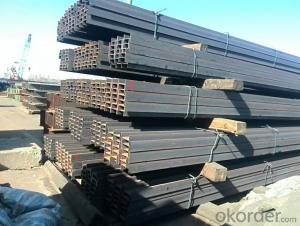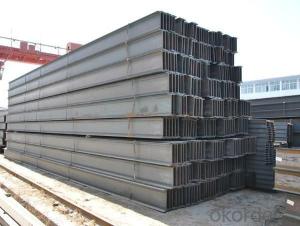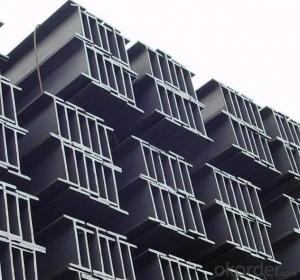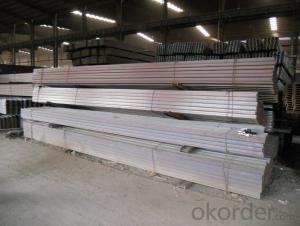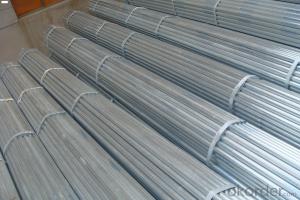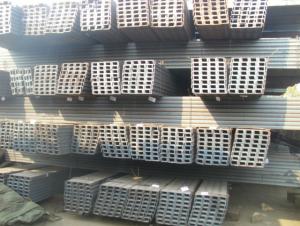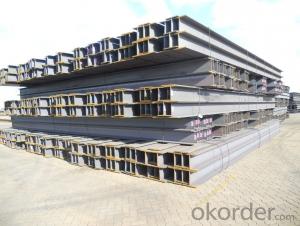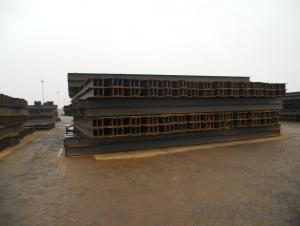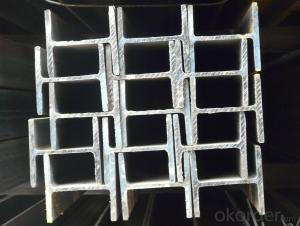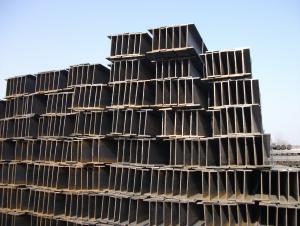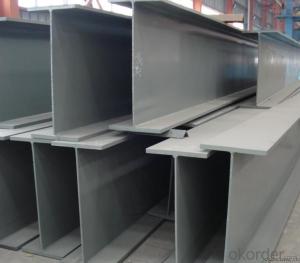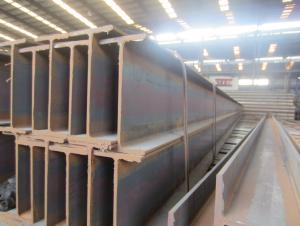H beams
- Loading Port:
- China Main Port
- Payment Terms:
- TT OR LC
- Min Order Qty:
- -
- Supply Capability:
- -
OKorder Service Pledge
OKorder Financial Service
You Might Also Like
Structural Steel H Beam Details:
| Minimum Order Quantity: | 100MT | Unit: | m.t. | Loading Port: | China Main Port |
| Supply Ability: | 10000MT | Payment Terms: | TT or LC |
Product Description:
Specifications of Hot Rolled Structural Steel H Beam
1. Standard: GB700-88, Q235B2.
2. Grade: Q235, SS400 or Equivalent
3. Length: 6m,10m, 12m as following table
4. Invoicing on theoretical weight or actual weight as customer request
5.Payment: TT or L/C
6. Sizes:
SIZE(mm) | DIMENSION(kg/m) |
100*100 | 16.9 |
125*125 | 23.6 |
150*75 | 14 |
150*150 | 31.1 |
148*100 | 20.7 |
198*99 | 17.8 |
200*100 | 20.9 |
248*124 | 25.1 |
250*125 | 29 |
Usage & Applications of Hot Rolled Structural Steel H Beam
Commercial building structure ;Pre-engineered buildings; Machinery support structure; Prefabricated structure; Medium scale bridges; Ship-building structure. etc.
Packaging & Delivery of Hot Rolled Structural Steel H Beam
1. Packing: it is nude packed in bundles by steel wire rod
2. Bundle weight: not more than 3.5MT for bulk vessel; less than 3 MT for container load
3. Marks:
Color marking: There will be color marking on both end of the bundle for the cargo delivered by bulk vessel. That makes it easily to distinguish at the destination port.
Tag mark: there will be tag mark tied up on the bundles. The information usually including supplier logo and name, product name, made in China, shipping marks and other information request by the customer.
If loading by container the marking is not needed, but we will prepare it as customer request.
4. Transportation: the goods are delivered by truck from mill to loading port, the maximum quantity can be loaded is around 40MTs by each truck. If the order quantity cannot reach the full truck loaded, the transportation cost per ton will be little higher than full load.
5. Delivered by container or bulk vessel
Production flow of Hot Rolled Structural Steel H Beam
Material prepare (billet) —heat up—rough rolling—precision rolling—cooling—packing—storage and transportation
- Q: What are the standard lengths of steel H-beams?
- The manufacturer and specific product specifications determine the standard lengths of steel H-beams, which can vary. Typically, steel H-beams are found in standard lengths between 20 and 65 feet. These lengths are frequently utilized in construction and structural engineering projects, providing ample support and stability. Furthermore, manufacturers may offer tailored lengths to meet individual customer needs. To ascertain the precise standard lengths for a specific steel H-beam product, it is advisable to consult the manufacturer or supplier.
- Q: How do steel H-beams perform in dynamic loads?
- The structural characteristics of steel H-beams make them highly effective in withstanding dynamic loads. These beams have an H-shaped cross-section, providing excellent strength and rigidity that is ideal for applications where dynamic forces are a concern. When exposed to dynamic loads like impact or vibrations, steel H-beams show a remarkable ability to resist deformation and fatigue failure. The shape of the beams allows for even distribution of applied loads, minimizing stress concentrations and preventing localized failure points. This makes them highly reliable and durable under dynamic conditions. Additionally, steel has a high strength-to-weight ratio, meaning that H-beams can withstand significant dynamic loads while remaining relatively lightweight. This simplifies the structural design and reduces material and transportation costs. Furthermore, steel H-beams possess excellent elasticity, enabling them to absorb and dissipate energy from dynamic loads. This helps minimize potential damage or deformation to the structure and reduces the amplitude of vibrations. It also prevents the propagation of stress waves throughout the beam. In conclusion, steel H-beams are well-suited for dynamic loads due to their structural integrity, high strength-to-weight ratio, and elasticity. They can effectively resist deformation, fatigue, and impact caused by dynamic loads while maintaining their structural integrity and durability.
- Q: How do steel H-beams perform in corrosive environments?
- Steel H-beams perform well in corrosive environments due to their inherent resistance to corrosion. The steel used to manufacture H-beams is typically coated with protective finishes, such as galvanization or epoxy coatings, which provide an additional layer of protection against corrosion. These coatings act as a barrier, preventing moisture, chemicals, and other corrosive elements from coming into direct contact with the steel surface. Furthermore, the structural design of H-beams, with their wide flanges and compact web, helps to distribute the load evenly and minimize the accumulation of moisture and debris, reducing the risk of corrosion. Additionally, H-beams can be designed to have a higher load-bearing capacity, which makes them suitable for heavy-duty applications in corrosive environments. Despite their resistance to corrosion, it is important to note that steel H-beams may still require regular maintenance and inspections in corrosive environments to ensure their long-term performance. This includes periodic cleaning to remove any accumulated dirt or debris that may trap moisture and lead to corrosion. Additionally, any damaged or worn-out protective coatings should be repaired or replaced promptly to maintain the beams' corrosion resistance. Overall, steel H-beams are a reliable choice for applications in corrosive environments, thanks to their inherent resistance to corrosion and the added protection provided by coatings. Proper maintenance and inspections will help ensure their durability and performance over time.
- Q: Are steel H-beams suitable for overhead cranes?
- Yes, steel H-beams are suitable for overhead cranes. H-beams are commonly used in the construction industry due to their high strength and durability. They provide excellent load-bearing capabilities, making them ideal for supporting heavy loads, such as those encountered in overhead crane applications. The structural design of H-beams allows for optimal weight distribution and efficient load transfer, ensuring the stability and safety of the crane system. Moreover, steel H-beams can be easily fabricated and welded, making them versatile and adaptable to various crane configurations and requirements. Overall, steel H-beams are a reliable and effective choice for overhead crane construction.
- Q: What are the considerations when designing for vibration control in Steel H-Beams?
- When designing for vibration control in Steel H-Beams, there are several important considerations that need to be taken into account. These include: 1. Material selection: Choosing the right type of steel for the H-Beam is crucial for effective vibration control. Steel with high stiffness and strength properties, such as high-strength low-alloy (HSLA) steel or carbon steel, is often preferred to minimize vibrations. 2. Structural design: The design of the H-Beam itself plays a significant role in vibration control. Factors such as the size and shape of the beam, the spacing and size of stiffeners, and the presence of additional bracing or damping elements need to be carefully considered to enhance the beam's vibration resistance. 3. Damping mechanisms: Incorporating damping mechanisms into the H-Beam design can help absorb and dissipate vibration energy. This can be achieved through the use of materials with inherent damping properties, such as composite materials or viscoelastic materials, or through the addition of tuned mass dampers or dynamic absorbers. 4. Dynamic loading conditions: Understanding the dynamic loading conditions that the H-Beam will be subjected to is essential for effective vibration control. This includes considering factors such as the frequency and amplitude of the vibrations, as well as any potential resonant frequencies that may occur. 5. Structural connections: Ensuring proper connections between the H-Beam and other structural elements is crucial for vibration control. Adequate stiffness and strength in the connections will help to minimize the transmission of vibrations through the structure. 6. Environmental factors: The environment in which the H-Beam will be located can also impact vibration control considerations. Factors such as temperature variations, humidity, and exposure to corrosive substances can affect the performance of the beam and its ability to resist vibrations. Overall, designing for vibration control in Steel H-Beams requires a comprehensive understanding of the structural dynamics involved, as well as careful consideration of material selection, structural design, damping mechanisms, loading conditions, connections, and environmental factors. By addressing these considerations, engineers can ensure that H-Beams are designed to effectively control vibrations and optimize the performance and safety of the structure.
- Q: Can steel H-beams be used for supporting elevated walkways or platforms?
- Indeed, elevated walkways or platforms can be supported by steel H-beams. In construction, steel H-beams are frequently employed due to their robustness and endurance. Their exceptional load-bearing capacities make them well-suited for sustaining structures like walkways and platforms. The H-shaped configuration of these beams enables superior weight distribution and resistance against bending or twisting forces, guaranteeing stability and safety for elevated constructions. Moreover, steel H-beams can be conveniently fabricated and installed, rendering them a pragmatic selection for such purposes.
- Q: Can steel H-beams be used in wastewater treatment plants?
- Yes, steel H-beams can be used in wastewater treatment plants. They are commonly used in the construction of infrastructure such as tanks, channels, and supporting structures due to their durability, strength, and resistance to corrosion. Additionally, steel H-beams can be easily fabricated and installed, making them a suitable choice for wastewater treatment plant applications.
- Q: How do steel H-beams distribute loads?
- Steel H-beams distribute loads through a combination of their shape and material properties. The shape of an H-beam, which resembles the letter "H", provides a high strength-to-weight ratio, allowing it to efficiently carry loads. The flanges, or top and bottom horizontal sections of the beam, are designed to resist bending and shear forces. They distribute the load over a larger area, reducing stress concentrations and preventing deformation or failure. The vertical web, located between the flanges, provides additional structural support and stability. It resists forces such as compression and tension, preventing the beam from buckling or collapsing under heavy loads. The web also helps to distribute the load evenly along the length of the beam. The material properties of steel also play a crucial role in load distribution. Steel is known for its high strength and stiffness, allowing H-beams to withstand heavy loads without significant deflection. The properties of steel, such as its Young's modulus and yield strength, contribute to the beam's ability to distribute loads effectively. Overall, steel H-beams distribute loads by utilizing their shape, which provides structural stability, and their material properties, which enable them to withstand and evenly distribute heavy loads. This makes them a popular choice in various construction and engineering applications.
- Q: Are steel H-beams resistant to corrosion?
- Yes, steel H-beams are generally resistant to corrosion. Steel is a highly durable and versatile material that can withstand exposure to weather conditions and other environmental factors. However, the level of corrosion resistance can vary depending on the specific type of steel used and the presence of protective coatings. H-beams made from carbon steel are more susceptible to corrosion, especially in humid or corrosive environments. To enhance their resistance to corrosion, H-beams can be galvanized or coated with protective layers such as paint or epoxy. These coatings act as a barrier, preventing moisture and other corrosive agents from reaching the steel surface. Regular maintenance and proper care are also essential for maintaining the corrosion resistance of steel H-beams over time.
- Q: What are the common fire protection measures for steel H-beams?
- Steel H-beams can be protected from fire through the use of various measures. One common method involves applying fire-resistant coatings directly onto the beams. These coatings are designed to endure high temperatures, effectively preventing the steel from reaching its critical temperature and thus maintaining its structural integrity. Another option is to use intumescent paints, which expand when exposed to heat. This expansion creates an insulating layer that slows down the transfer of heat to the steel beam, safeguarding it from the destructive effects of fire. Additionally, fire-resistant cladding can be installed around the steel H-beams. This cladding acts as an extra protective layer, insulating the steel from heat and flames. By implementing these measures, the structural stability of steel H-beams can be ensured during a fire, preventing any potential failure.
Send your message to us
H beams
- Loading Port:
- China Main Port
- Payment Terms:
- TT OR LC
- Min Order Qty:
- -
- Supply Capability:
- -
OKorder Service Pledge
OKorder Financial Service
Similar products
Hot products
Hot Searches
Related keywords
